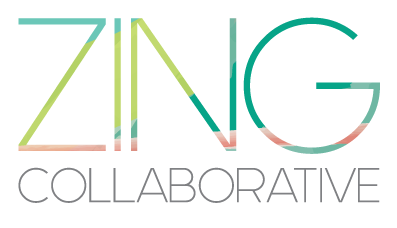Tips, Resources, and Links for Fall Cleaning
Are you feeling the urge for fall cleaning?
In my sphere and within the Zing Collaborative Community, it feels like there is a desire in the air to clean, purge, declutter, tidy, and remove excess stuff.
Maybe it feels symbolic—an attempt to be done with the societal chaos of the last several years.
Maybe it feels therapeutic—something small that we can control in a world that often feels out of our control.
Or maybe it feels necessary—a way to make our spaces a bit more functional, usable, and accessible.
Whatever the reason, here are a few resources to help along the way, if you, too, are feeling an itch for some fall cleaning.
To Consider:
First, we can look within ourselves to consider what we might be carrying around that is no longer serving us, the people around us, or the world at large. Specifically, we might consider:
What thoughts, assumptions, or stories am I carrying with me that I can work to let go of, shed, or release?
What judgments toward myself or others am I carrying? What could it look like to release them?
What am I picking up that isn’t mine to pick up? This list could include: other people’s drama, societal issues that we are stressing about but not taking action on, other people’s decisions, or worrying without taking meaningful action. What could it look like first to notice this, and then to work on putting these things back down? If you have a habit of doing this, I recommend checking out The Drama Triangle. It provides a helpful and straightforward framework for noticing when we are picking up other people’s tasks or dramas (and functioning as a rescuer) or feeling that we are a victim of our world or other people’s decisions (functioning as a victim*).
Are the people in my life aligned with my values, my sense of integrity, and the type of person I want to be? How can I cultivate and nurture relationships with those who are? And, where might I be expending energy on relationships that are not in the highest good of all?
*It has been pointed out to me that the use of the word victim in this framework can be problematic, in the way that it can minimize actual victimhood in instances such as trauma or abuse. I want to pause to honor this perspective, while also using the original language from the framework which was created by Stephan Karpman.
To Tackle Extra Stuff at Home:
Second, we can tackle the physical stuff. This might include a bit of light decluttering, or it might include a top-to-bottom cleaning and purging of our living spaces. Whichever you are feeling called toward, here are a few resources to help along the way.
Stuff to Get Rid of Now via The Spruce. According to this list, we don’t need to keep disposable silverware, single use gadgets, or old magazines that we might use one day for a vision board. Who knew?
The 20 Day Decluttering Cure via Apartment Therapy. This challenge sends daily emails, for twenty days, and approaches decluttering in a way that is manageable and bite sized.
The 10 Things Rule via Apartment Therapy. This rule suggests cleaning or decluttering ten things anytime we move to a different space, leave the house, or transition in some way. Simple and surprisingly effective.
Reading My Tea Leaves. Erin has a way of coming up with creative solutions to deal with tricky storage challenges and typically unsightly items in the home. She’s also a whiz at maximizing small spaces and keeping stuff to a minimum.
The Home Edit gals have a way of making spaces organized, functional, and beautiful. Some of the homes and spaces they work in are a bit over the top, so their work can also serve as a bit of escapism . . .
How to Sell Used Clothes, Sustainably, via Good On You. This post includes a number of options for selling used clothes online. A web search will turn up similarly robust results. While I’ve historically been a bit torn about this idea, since it involves creating errands in the form of mailing things, I might be coming around—at least for now. It is joyful to mail items directly to an interested seller, and to personalize the package with a bit of love and care. Most compellingly, selling directly to individuals is a hopeful alternative to contributing to the 80% of textiles that end up in landfills.
The Buy Nothing Project is a worldwide movement, based on a hyperlocal gifting economy. Quickly get rid of things, or find new treasures for free. In our neighborhood, the listserv is often used in a similar way.
Consider new uses for old things. For example: the old t-shirt that you’ve never worn but that you’ve been keeping around because it is from the longest and hardest bike ride you’ve ever done (guilty) would make a great cleaning rag. The small boxes that are stacking up in the basement for no good reason might make great drawer organizers. The small planting pot that is sitting empty in the garage can be cleaned out and used to store keys. The list goes on.
Send any box that comes in back out again, filled with items to donate, sell, or gift (thank you for this awesome tip, Tracy!).
Buy less. Often, when we clean, purge, or declutter existing spaces we may uncover a few new treasures.
What do you think? Are you currently in the mood for some fall cleaning? And, what are your favorite cleaning, decluttering, and purging tips? Feel free to share in the comments if you’d like. Thank you for reading!

